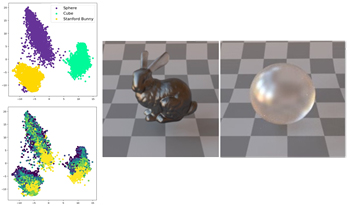
One central challenge in modeling material appearance perception is the creation of an explainable and navigable representation space. In this study, we address this by training a StyleGAN2-ADA deep generative model on a large-scale, physically based rendered dataset containing translucent and glossy objects with varying intrinsic optical parameters. The resulting latent vectors are analyzed through dimensionality reduction, and their perceptual validity is assessed via psychophysical experiments. Furthermore, we evaluate the generalization capabilities of StyleGAN2-ADA on unseen materials. We also explore inverse mapping techniques from latent vectors reduced by principal component analysis back to original optical parameters, highlighting both the potential and the limitations of generative models for explicit, parameter-based image synthesis. A comprehensive analysis provides significant insights into the latent structure of gloss and translucency perception and advances the practical application of generative models for controlled material appearance generation.
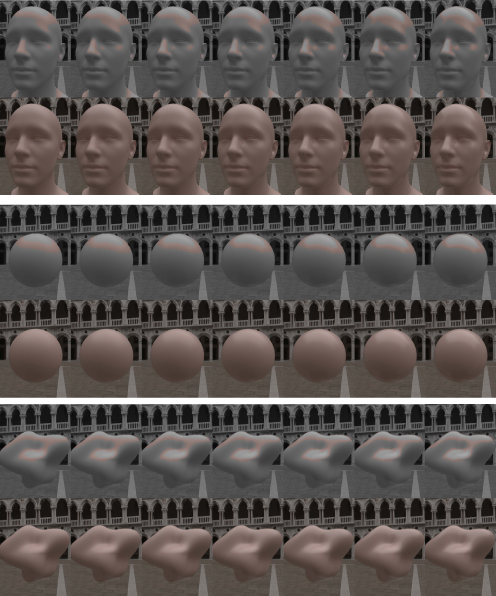
Human faces are considered an important type of stimuli integral to social interaction. Faces occupy a substantial share of digital content, and their appearance can meaningfully impact how they are perceived and evaluated. In particular, past work has shown that facial color appearance can directly influence such perceptions. However, little is known regarding the perception of facial gloss and its influence on facial skin color appearance. The current work investigates how skin roughness influences perceived facial gloss and how these in turn affect facial color appearance for 3D rendered faces. Here, “roughness” refers to a parameter of the microfacet function modeling the microscopic surface. Two psychophysical experiments were conducted to model the interaction among skin roughness, perceived facial gloss, and perceived facial color appearance using varied facial skin tones. The results indicated an exponential relationship between skin roughness and perceived facial gloss, which was consistent across different skin tones. Additionally, gloss appearance influenced the perceived lightness of faces, a pattern not observed to the same extent among non-face objects included in the experiment. We expect that these results might partially be explained by discounting specular components for surface color perception to infer color attributes and by simultaneous contrast induced by a concentrated specular highlight. The current findings provide guidance for predicting visual appearance of face and non-face objects and will be useful for gloss and color reproduction of rendered digital faces.
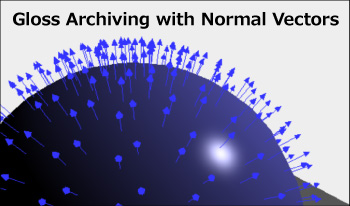
This paper proposes a method of gloss archiving using normal vectors. When archiving the gloss phenomenon of a material, it is important to record not only the reflected light intensity but also the gloss unevenness. This is because the gloss unevenness greatly affects the texture of the material. However, it has been difficult to quantitatively record gloss unevenness because they are dependent on the viewing direction and lighting. Gloss unevenness on mirror surfaces are mainly caused by irregularities in the normal direction. Therefore, we came up with a solution to archive the gloss unevenness phenomenon by recording the distribution of surface normal vectors. We are currently developing a apparatus to measure the distribution of surface normal vectors. Using this surface normal data, it will be also possible to reproduce gloss unevenness images using Computer Graphics technology.
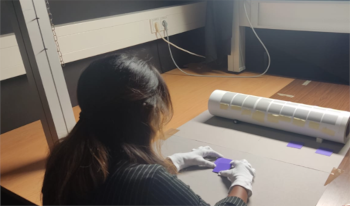
Predicting the final appearance of a print is crucial in the graphic industry. The aim of this work is to build a mathematical model to predict the visual gloss of 2D printed samples. We conducted a psychophysical experiment where the observers judged the gloss of samples with different colours and different gloss values. For the psychophysical experiment, a new reference scale was built. Using the results from the psychophysical experiment, a mathematical prediction model for the visual assessment of gloss has been developed. By using the Principal Component Analysis to explain and predict the perceived gloss, the dimensions were reduced to three dimensions: specular gloss measured at 60°, Lightness (L*) and Distinctness of Image (DOI).

Gloss perception is a complex psychovisual phenomenon, whose mechanisms are not yet fully explained. Instrumentally measured surface reflectance is usually poor predictor of human perception of gloss. The state-of-the-art studies demonstrate that, in addition to surface reflectance, object's shape and illumination geometry also affect the magnitude of gloss perceived by the human visual system (HVS). Recent studies attribute this to image cues – the specific regularities in image statistics that are generated by a combination of these physical properties, and that, in their part, are proposedly used by the HVS for assessing gloss. Another study has recently demonstrated that subsurface scattering of light is an additional factor that can play the role in perceived gloss, but the study provides limited explanation of this phenomenon. In this work, we aimed to shed more light to this observation and explain why translucency impacts perceived gloss, and why this impact varies among shapes. We conducted four psychophysical experiments in order to explore whether image cues typical for opaque objects also explain the variation of perceived gloss in translucent objects and to quantify how these cues are modulated by the subsurface scattering properties. We found that perceived contrast, coverage area, and sharpness of the highlights can be combined to reliably predict perceived gloss. While sharpness is the most significant cue for assessing glossiness of spherical objects, coverage is more important for a complex Lucy shape. Both of these observations propose an explanation why subsurface scattering albedo impacts perceived gloss.
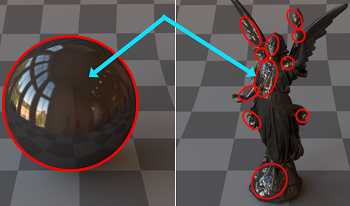
Gloss is an important appearance attribute, and its exact perceptual mechanisms are yet to be fully understood. Previous works attempted to model the relationship between optical and perceptual gloss. The state-of-the-art studies demonstrate that the human visual system has a poor ability to recover surface reflectance and perceived gloss rather depends on image cues that are generated by a complex interaction among optical material properties, illumination, object shape, and its surface geometry. Therefore, perceptual models defined on a particular shape, such as a sphere, may not generalize to other objects. To investigate shape-specific differences, we conducted a psychophysical experiment with a simple sphere and complex Lucy shapes. We scaled the magnitude of apparent gloss to study how the shape affects perceived gloss, and how the role of optical material properties varies between the shapes. We observed significant cross-shape differences, which we argue can be explained by the analysis of the image cues.
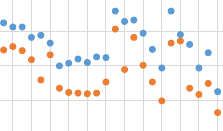
Perlin noise, a type of procedural noise, was used for the design of elevation files for 2.5D printing. This printing method uses elevation data from a height map to create physical relief by superimposing layers of ink. In this experiment, the grayscale values of noise functions were used as elevation values to build different surface structures in UV curable ink by 2.5D printing. Printed samples with varying levels of Perlin noise were created and their reflectance properties were studied by measuring the values of specular gloss. The roughness and specular gloss of the printed surfaces were effectively influenced when varying the persistence and octaves of the noise functions. The aim of implementing the procedural approach to a high-resolution printing method has been to explore the reflectance properties of custom noise functions when transferred to the physical realm. This might contribute to better understand the effect of surface structure on the appearance of materials. Potentially, this approach will enable the use of relief printing to produce structures with a more natural appearance and a desired gloss value by using a low-cost computing process.
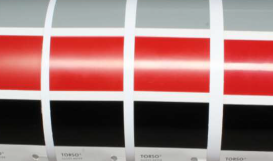
Interaction between the diffuse colour and the gloss of its surface is common. In this work, the influence of different gloss levels is tested on the diffuse colour. Firstly, we investigated how the albedo colour correlates with the reflected specular part. Furthermore, we provided a visual experiment. The visual experiment is conducted in two parts. The results of the visual experiment show that changing the angle of illumination does not affect the final gloss perception. Furthermore, a fitting of the gloss perception is done to find a parameter that correlates with the visual perception of gloss. The results show that there is a quadratic correlation between the Canon scattering indexes and the perceptual gloss.